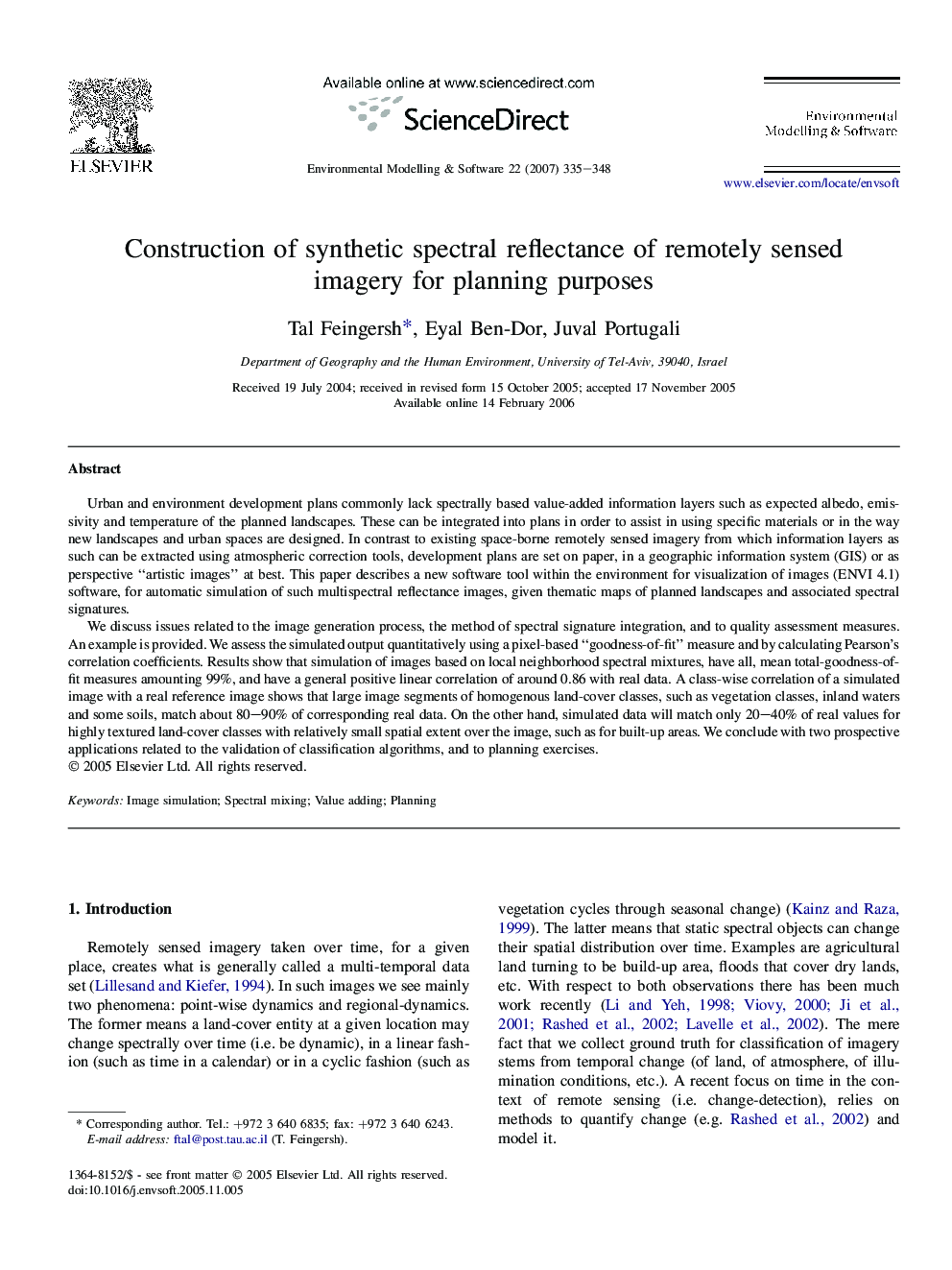| Article ID | Journal | Published Year | Pages | File Type |
|---|---|---|---|---|
| 568854 | Environmental Modelling & Software | 2007 | 14 Pages |
Urban and environment development plans commonly lack spectrally based value-added information layers such as expected albedo, emissivity and temperature of the planned landscapes. These can be integrated into plans in order to assist in using specific materials or in the way new landscapes and urban spaces are designed. In contrast to existing space-borne remotely sensed imagery from which information layers as such can be extracted using atmospheric correction tools, development plans are set on paper, in a geographic information system (GIS) or as perspective “artistic images” at best. This paper describes a new software tool within the environment for visualization of images (ENVI 4.1) software, for automatic simulation of such multispectral reflectance images, given thematic maps of planned landscapes and associated spectral signatures.We discuss issues related to the image generation process, the method of spectral signature integration, and to quality assessment measures. An example is provided. We assess the simulated output quantitatively using a pixel-based “goodness-of-fit” measure and by calculating Pearson's correlation coefficients. Results show that simulation of images based on local neighborhood spectral mixtures, have all, mean total-goodness-of-fit measures amounting 99%, and have a general positive linear correlation of around 0.86 with real data. A class-wise correlation of a simulated image with a real reference image shows that large image segments of homogenous land-cover classes, such as vegetation classes, inland waters and some soils, match about 80–90% of corresponding real data. On the other hand, simulated data will match only 20–40% of real values for highly textured land-cover classes with relatively small spatial extent over the image, such as for built-up areas. We conclude with two prospective applications related to the validation of classification algorithms, and to planning exercises.
